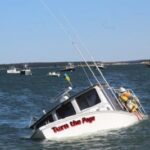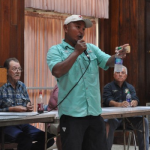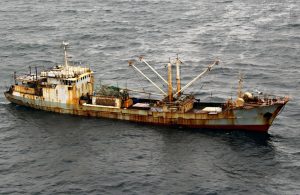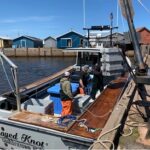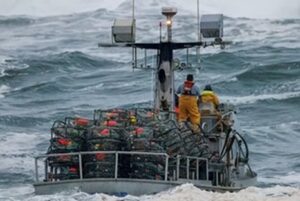Daily Archives: December 24, 2016
A leaking pipe may have started Alaska Juris demise
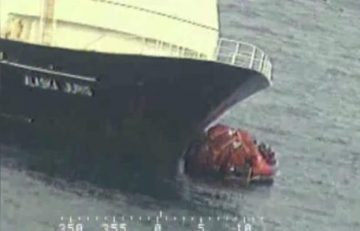 Flashlight in hand, a stunned Chief Engineer Eddie Hernandez peered into the darkness to survey the swamped engine room of the Alaska Juris. The cold seawater was waist-deep, and more was bubbling up from a leak, possibly from a busted pipe on the starboard side of the factory trawler. “I wasn’t afraid or anything. I just felt helpless,” Hernandez was a key witness for Coast Guard officials seeking to unravel the mystery of the Alaska Juris’ demise on a calm, summer day. Officials also are investigating the tangled operations of the vessel’s owner, Fishing Company of Alaska, which teams with a Japanese fish buyer and still operates three factory trawlers whose large crews in remote North Pacific locations net, process and freeze the catch. The hearings offered a gritty look at conditions aboard the vessel, which had benefitted from millions of dollars in investments in maintenance — yet still appeared so unsafe, one engineer said, that he quit this year after spending just a day at port. “The biggest thing that was bugging me was that if I take this job, I’m going to have to lie to my wife and kids about the condition of this boat,” said Carl Lee Jones Read the story here 22:34
Flashlight in hand, a stunned Chief Engineer Eddie Hernandez peered into the darkness to survey the swamped engine room of the Alaska Juris. The cold seawater was waist-deep, and more was bubbling up from a leak, possibly from a busted pipe on the starboard side of the factory trawler. “I wasn’t afraid or anything. I just felt helpless,” Hernandez was a key witness for Coast Guard officials seeking to unravel the mystery of the Alaska Juris’ demise on a calm, summer day. Officials also are investigating the tangled operations of the vessel’s owner, Fishing Company of Alaska, which teams with a Japanese fish buyer and still operates three factory trawlers whose large crews in remote North Pacific locations net, process and freeze the catch. The hearings offered a gritty look at conditions aboard the vessel, which had benefitted from millions of dollars in investments in maintenance — yet still appeared so unsafe, one engineer said, that he quit this year after spending just a day at port. “The biggest thing that was bugging me was that if I take this job, I’m going to have to lie to my wife and kids about the condition of this boat,” said Carl Lee Jones Read the story here 22:34
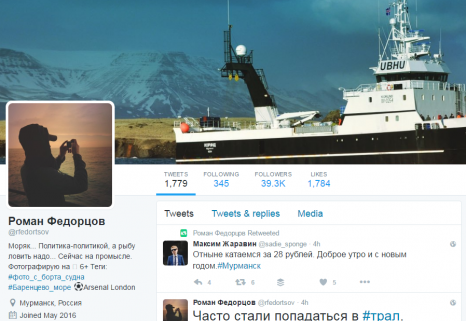
Russian deep-sea fisherman’s Twitter feed is filled with nightmares
Roman Fedorstov’s account began featuring images of blood-chilling bottom feeders, creepy crustaceans and other sorts of ghoulish sea creatures that he and his crew hauled in their nets while trawling the deep waters off Russia’s Barents Sea. Fedortsov works on a fishing trawler in Murmansk, Russia, and regularly comes in contact with deep-sea dwellers that look like the kind of weird creatures filmmaker Tim Burton would design. The English-language site Moscow Times posted a handful of the photos, but I’ve found even more on Fedortsov’s Twitter. “Such zones are normally undisturbed by commercial fishing, which is precisely why these unusual creatures have survived thus far”. “Some of the shallower living, lighter-colored fishes might be a couple of feet”, Professor James Childress, who researches the biology of deep-sea animals at University of California Santa Barbara. Read the rest here, and visit Romans twitter feed click here 11:24

Craziest lobster contest
There are blue lobsters, spotted lobsters, bi-colour and rainbow ones. That’s in addition to the bizarre versions with extra appendages. Billy Mole, marketing manager for Murray GM, says he certainly didn’t expect such a huge response to their Craziest Lobster Contest. “Coming up on three weeks into the contest, we’re close to 150 submissions,” he said,, noting at that time the lobster in the lead for the win had over 800 votes and they expected it to easily reach 1,000-plus votes. The contest is being run through the dealership’s Facebook Page, with the winner being determined by the most likes. The contest was created and organized by Mole and sales consultant Shawn Doucette. “Fishermen are a huge part of our customer base and we wanted to do something special just for them,” said Mole. Read the story here 10:12
Oregon: Entire coast open to commercial crabbing on Jan. 1
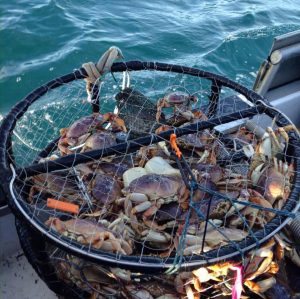 The Oregon Department of Fish and Wildlife and the Oregon Department of Agriculture announce the opening of the commercial crab season from Cape Blanco (just north of Port Orford) to the Oregon/Washington border starting Jan. 1. Fishery managers and food safety specialists consistently exercised caution in opening the crab season this year due to elevated levels of domoic acid found in crabs along Oregon’s central coast. The almost month-long delay in opening the season allowed for additional testing for domoic acid to provide confidence that crab harvested from Oregon waters are safe to consume and of excellent quality. Testing of crab in recent weeks show the elevated levels of domoic acid in the central section of the state have decreased and are all below U.S. Food and Drug Administration alert levels for at least two sample periods in a row. Read the story here From Oregon Department of Fish and Wildlife click here 08:52
The Oregon Department of Fish and Wildlife and the Oregon Department of Agriculture announce the opening of the commercial crab season from Cape Blanco (just north of Port Orford) to the Oregon/Washington border starting Jan. 1. Fishery managers and food safety specialists consistently exercised caution in opening the crab season this year due to elevated levels of domoic acid found in crabs along Oregon’s central coast. The almost month-long delay in opening the season allowed for additional testing for domoic acid to provide confidence that crab harvested from Oregon waters are safe to consume and of excellent quality. Testing of crab in recent weeks show the elevated levels of domoic acid in the central section of the state have decreased and are all below U.S. Food and Drug Administration alert levels for at least two sample periods in a row. Read the story here From Oregon Department of Fish and Wildlife click here 08:52New Report Identifies Sources of Nitrogen Loading in Local Waters
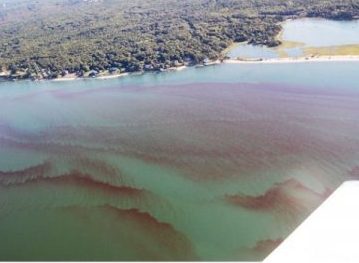 A new report has pinpointed sources of nitrogen loading in local waters. The New York Department of State released the Long Island South Shore Estuary Reserve water quality report on Wednesday, which identifies sources of pollution in eastern bays and takes a closer look at ways to improving the environmental health of local waters, a release said. Nitrogen sources identified in the report include stormwater runoff, drainage or seepage — including seepage from septic systems and cesspools. Other sources include failing or inadequate on-site wastewater treatment systems discharging to the bays, the report says. The “Long Island South Shore Estuary Reserve Eastern Bays Project: Nitrogen Loading, Sources, and Management Options” report was completed in cooperation with Stony Brook University School of Marine and Atmospheric Sciences and is an important step in estimating the amount of nitrogen that causes water degradation to the South Shore of Long Island, officials said. Excess nitrogen has led to an increase in algal blooms, a reduction in seagrass beds that provide habitat for shellfish and finfish and a host of other water quality impairments. The nitrogen pollution has also contributed to the decline of shellfish and commercial fishing on Long Island, the report said. Read the story here 08:21
A new report has pinpointed sources of nitrogen loading in local waters. The New York Department of State released the Long Island South Shore Estuary Reserve water quality report on Wednesday, which identifies sources of pollution in eastern bays and takes a closer look at ways to improving the environmental health of local waters, a release said. Nitrogen sources identified in the report include stormwater runoff, drainage or seepage — including seepage from septic systems and cesspools. Other sources include failing or inadequate on-site wastewater treatment systems discharging to the bays, the report says. The “Long Island South Shore Estuary Reserve Eastern Bays Project: Nitrogen Loading, Sources, and Management Options” report was completed in cooperation with Stony Brook University School of Marine and Atmospheric Sciences and is an important step in estimating the amount of nitrogen that causes water degradation to the South Shore of Long Island, officials said. Excess nitrogen has led to an increase in algal blooms, a reduction in seagrass beds that provide habitat for shellfish and finfish and a host of other water quality impairments. The nitrogen pollution has also contributed to the decline of shellfish and commercial fishing on Long Island, the report said. Read the story here 08:21


































